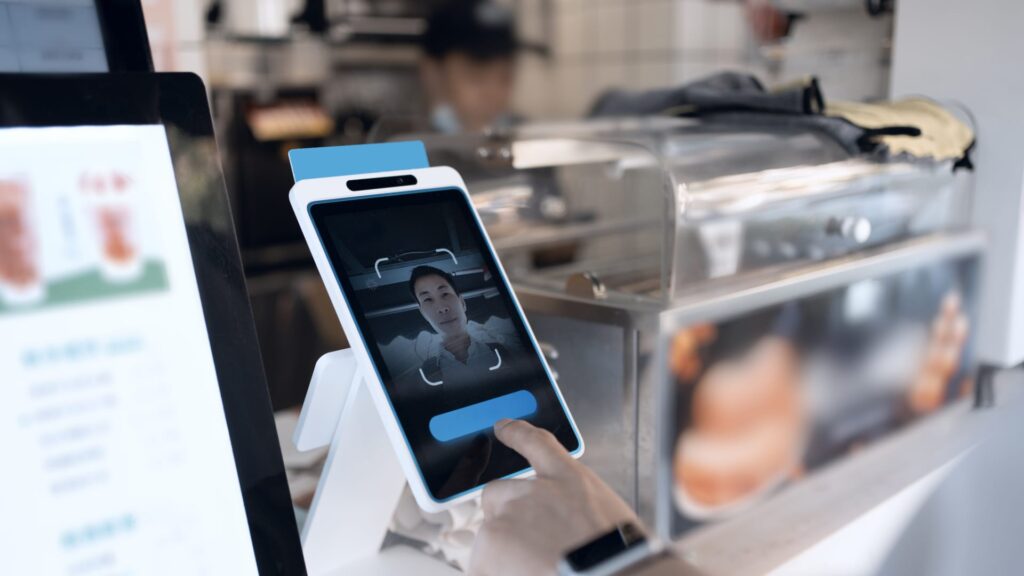As stores implement biometric technology for a variety of purposes, from payments to broader anti-theft systems, consumer blowback, and lawsuits are rising. In March, an Illinois woman sued retailer Target for allegedly illegally collecting and storing her and other customers’ biometric data via facial recognition technology without their consent. Amazon and T-Mobile are also facing legal actions related to biometric technology.
Automated fast food restaurant CaliExpress by Flippy, in Pasadena, Calif., opened in January to considerable hype due to its robot burger makers, but the restaurant launched with another, less heralded innovation: the ability to pay for your meal with your face.
Biometric payment options are becoming more common. Amazon introduced pay-by-palm technology in 2020, and while its cashier-less store experiment has faltered, it installed the tech in 500 of its Whole Foods stores last year. Mastercard, which is working with PopID, launched a pilot for face-based payments in Brazil back in 2022, and it was deemed a success — 76% of pilot participants said they would recommend the technology to a friend. Late last year, Mastercard said it was teaming with NEC to bring its Biometric Checkout Program to the Asia-Pacific region.
“Our focus on biometrics as a secure way to verify identity, replacing the password with the person, is at the heart of our efforts in this area,” said Dennis Gamiello, executive vice president of identity products and innovation at Mastercard. He added that based on positive feedback from the pilot and its research, the checkout technology will come to more new markets later this year.
In other countries, most notably China, biometric payment systems are comparatively mature, from visitors to McDonald’s in China being able to use facial recognition technology to pay for their orders, to systems offered by AliPay, which launched biometric payment as far back as 2015 and began testing the technology at KFC locations in China in 2018.
Juniper Research forecasts over 100% market growth for global biometric payments between 2024 and 2028, and by 2025, $3 trillion in mobile, biometric-secured payments.
“We believe our partnership with JPMorgan is a watershed moment for biometric payments as it represents the first time a leading merchant acquirer has agreed to push biometric payments to its merchant customers,” said John Miller, PopID CEO.
Sheldon Jacobson, a professor in computer science at the University of Illinois, Urbana-Champaign, said he sees biometric identification as part of a technology continuum that has evolved from payment with a credit card to smartphones. “The next natural step is to simply use facial recognition,” he said.
Concerns about privacy and facial recognition, he says, are overblown. “We voluntarily give up our privacy all the time,” Jacobson said. “We post on Facebook, we use social media and we are basically giving up our privacy. I tell people constantly that everything about you is already out there.”











